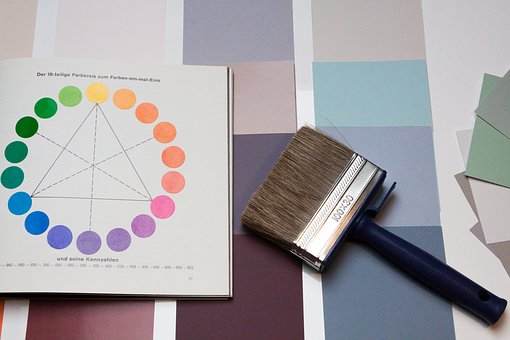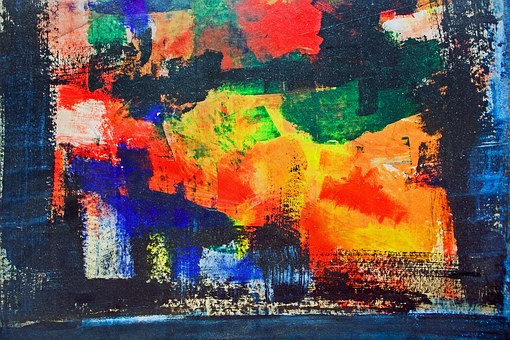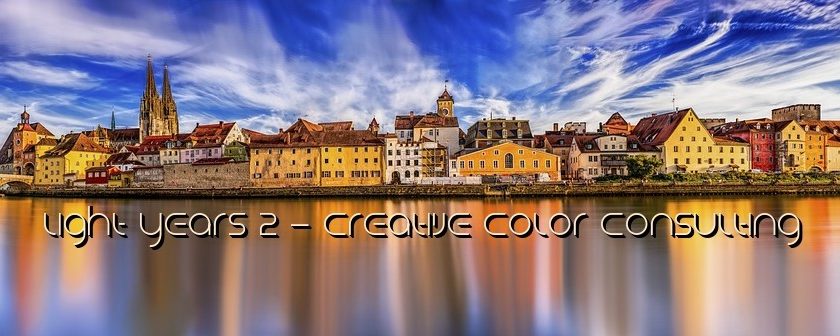Basic colors have many variations. Paler versions that are at times better suited to covering the walls in our homes have the same qualities as bold colors but in a way that’s gentler. If you are decorating an area, it is important to remember both the complementary colors as well as their variations and combine those with your main color of choice using pictures, soft furnishings, etc.
It can be a good idea to consider the room’s aspect. For instance, if you need a calming atmosphere in a room that faces north, which may perhaps be one of the colder ones in your home, it can be a good idea to use warm colors (i.e. variations of red, orange, and red, which are warm colors) to ensure that the room does not feel colder.

Using Colors in Your Home
We all have our personal preferences when it comes to the use of color in the home environment. However, specific color choice can help to provide a ‘feeling’ for a space. Below are some suggested uses of colors in the workplace, at home, and in various other environments along with the effects that those colors can produce.
1. Violet
Effects:
- Purifying
- Helps us give our best and heightens awareness
- Enhances dignity and purpose
- Good for prayer and meditation
- Calming for both mind and body
Suggested Areas Where Violet Can Be Used:
- Pale violet for bedrooms
- Entry areas to hospitals and clinics
- Festival areas
- Places of worship
2. Indigo
Effects:
- The color of the higher mind and divine knowledge
- Helps open up a person’s intuition
- Sedative
Suggested Areas Where Indigo Can Be Used:
- Treatment rooms
- Bedrooms
- Not ideal for entertainment areas but for more ‘quiet’ areas
- It can be used as part of the décor of a study or library since some people find indigo helpful for studying
3. Blue
Effects
- Healing, relaxing, and calming
- Not as sedating as indigo
- The color of communication
Suggested Areas Where Blue Can Be Used:
- Any rooms except those used for play or physical activity
4. Green
Effects:
- Harmonizing, balancing, and encouraging understanding and tolerance
Suggested Areas Where the Color Green Can Be Used:
- It can be used for virtually all areas depending on the shade.
- It should be used in combination with other colors to ensure that the harmony and balance does not become more like complete indecision and inactivity.
5. Yellow
Effects:
- Promotes feelings of confidence
- Stimulates mental activity
- It helps us stay alert, which makes it helpful for study
Suggested Areas Where Yellow Can Be Used:
- Entrance halls
- Activity rooms
- Not ideal for bedrooms since it can interfere with sleep because it tends to keep the mind ‘switched on’. Not ideal for areas of possible stress

6. Orange
Effects:
- It can stimulate creativity
- Energizing and warming
- It is the color of sociability and fun
Suggested Areas Where Orange Can Be Used:
- Any creative and/or activity area.
- Not ideal for areas of possible stress or bedrooms
7. Red
Effects:
- Stimulates appetite
- Energizing and excites the emotions
Suggested Areas Where Red Can Be Used:
- Any activity area. However, serious thought should be given to the tone and depth of the space where it is to be used since it can make spaces seem smaller and can be oppressive or claustrophobic.
- If used the right way, however, red along with its variations can make a space feel cozy and warm. It is a popular choice of color in restaurants.
8. Magenta
Effects:
- It is uplifting and helps us gain a feeling of fulfillment and completeness
- Magenta is the 8th color in the color spectrum, which is a combination of violet and red, which means that it combines our spiritual and earthly self thereby balancing matter and spirit.
Suggested Areas Where the Color Magenta Can Be Used: Chapel halls, lecture rooms.
- Not ideal for activity rooms or play rooms.
9. Turquoise
Effects:
- Calming, cool, and good for the immune and nervous systems
Suggested Areas Where Turquoise Can Be Used:
- All rooms, but it isn’t ideal for activity areas
10. Pink
Effects:
- It nurtures and soothes
- It encourages unconditional love and helps dissolve anger
Suggested Areas Where the Color Pink Can Be Used:
- Ideal for a child’s or baby’s bedroom

11. Black
Effects:
- It gives us the space for inner searching and reflection
- Used with another color, black enhances the second color’s energy
Suggested Areas Where Black Can Be Used:
- Not ideal as the sole color, but if used with care, it can complement and enhance other colors in just about any situation
12. White
Effects:
- It contains all colors. It illuminates our thoughts thus giving clarity and emphasizes purity
Suggested Areas Where White Can Be Used:
- Any room, but it may be somewhat intimidating to some. It should be broken up with a different color or pictures/ornaments/plants etc.

